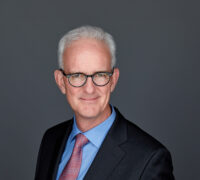Mark Schneider
As CEO of Nestlé, Mark Schneider is arguably the most powerful man in the food and beverage industry. And, as he reveals to IMD President Jean-François Manzoni in the latest episode of...
June 9, 2021 • by James E. Henderson in Leading in Turbulent Times
The once popular model of having a high-level management team develop a strategy which is then communicated to the rest of the organization is quickly becoming archaic. A truly inclusive strategy is...
Before one can strive for inclusiveness, it is important to understand what engagement looks like. “Participating means just asking for information but engagement means actually eliciting opinions on the critical choices facing the organization and including them in the whole process,” explains IMD Strategy Professor James Henderson.
But this level of inclusion has certain risks which mean even as companies transform their strategy process, there are a lot of fears and hesitations experienced by top executives. In Henderson’s webinar session he asked participants if they were an incoming CEO and presented with a new strategy from a team that had worked for a year but was only developed with high levels of input, how they would proceed. 57% said they would seek input from a wider cross-section of employees but still a limited contingent of critical stakeholders.
Some of the fears surrounding full inclusion include not wanting to slow down the process, worry that it will create expectations that if not met could actually cause employee disengagement and disappointment, and concern that it could even backfire by exposing a majority bias which alienates some part of the employee population.
However, done correctly, the benefits of full inclusion outweigh these fears.
Looking at the case study of Roche Diagnostics, CPS, which faced this dilemma, Henderson demonstrated what it looks like to strive for full inclusion in the strategy process.
Roche’s leadership team had spent a year looking at possible strategy choices and formulated a plan. Then the company’s incoming CEO, Thomas Schinecker, noticed that the budget might not support the number of projects planned, so he opted to seek organizational wide input before moving forward. Under Schinecker, all employees were invited to participate in strategy workshops, with roughly 50% actually engaging in the process. Using heavy touch digital tracking 11,300 ideas were collected, consolidated, and reported back to the leadership team.
The level of employee engagement was so high at Roche, they continued to repeat this exercise at broader levels. Schinecker says the key for executives is to let go. “If you have faith in the power of the people, they will come up with something brilliant,” he encouraged.
Furthermore, the results gave the strategy team a lot of granularity in terms of their choices. The company’s head of strategy indicated that people didn’t seem to mind how their inputs were used but they were excited about being part of the process. There is a lot of research to indicate this is a common phenomenon: if people feel the process was fair, they are satisfied with the results. So, despite the risks, it is worth the effort to include everyone.

Professor of Strategic Management at IMD
James E. Henderson is Professor of Strategic Management at IMD, Program Co-Director of the Leading Sustainable Business Transformation program, and Program Director of the Strategic Partnership course. He helps companies achieve and sustain their competitive advantage either at a business unit, corporate, or global level through directing custom specific executive programs, facilitating strategy workshops, or teaching MBAs and executives.
July 8, 2021 in Sustainability • 1 min read
As CEO of Nestlé, Mark Schneider is arguably the most powerful man in the food and beverage industry. And, as he reveals to IMD President Jean-François Manzoni in the latest episode of...
July 8, 2021 • by Natalia Olynec in Sustainability • 4 min read
In Asia, economic growth comes at a high carbon cost. CFOs have a critical role to play in making their companies take account of sustainability, says Natalia Olynec....
July 6, 2021 in Sustainability • 6 min read
Mark Schneider cites data suggesting that effects of climate change and biodiversity loss have shot to the top of the agenda....
July 5, 2021 • by Misiek Piskorski in Sustainability • 3 min read
Now that pride month has come and gone it's a good time to take stock of whether your inclusion efforts are more than just a flash in the pan, or something your...
July 1, 2021 • by Knut Haanaes, James E. Henderson in Sustainability • 3 min read
Many businesses understand the need to move towards sustainability but aren't sure where to start. There are some basic steps leaders can take in the right direction....
June 28, 2021 in Sustainability • 5 min read
Banks and investors engaged in sustainable finance initiatives need to focus on countries where they can make the most impact, and also on striking a better balance between environmental and social goals,...
June 24, 2021 in Sustainability • 1 min read
“Solar Impulse” explorer Bertrand Piccard on finding purpose. As an explorer, Bertrand Piccard has always had a strong sense of purpose. But now he finds he has a gift for helping other...
June 14, 2021 • by Nick Parsons in Sustainability • 3 min read
The impact of CO2 emissions on climate change is one of the most urgent problems facing the world today, but any solution must focus on Asia....
Explore first person business intelligence from top minds curated for a global executive audience